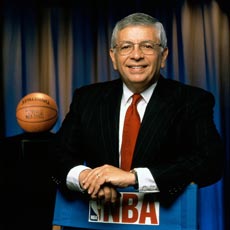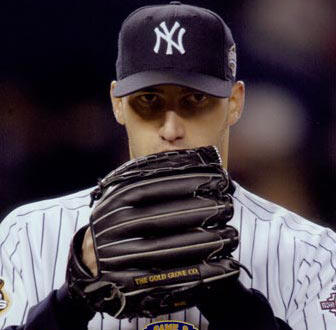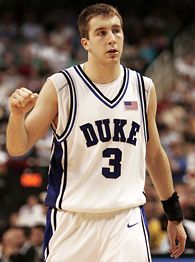 ON COLLEGE BASKETBALL
ON COLLEGE BASKETBALLEditor's Note: This is my annual "I wish I were a basketball coach so I could keep my players from making all the wrong
plays in the final minute" column.
On Saturday night, I was impressed by the smart plays Tennessee made down the stretch to upset previously unbeaten Memphis. The Vols played the final seconds with poise, fouling Derrick Rose when they had a 3-point advantage with less than 10 seconds remaining.
Memphis never had a chance to tie the game at the end.
On Monday, the Vols gained their first-ever No. 1 ranking. Tuesday night, they threw it away, losing 72-69 at Vanderbilt. They didn't play the last minute about as poorly as they could have. Rather, they gave themselves the worst chance to win with the decisions they made.
Granted, it's a 40-minute basketball game. One minute doesn't decide it. The Commodores played extremely well throughout the SEC battle to earn the victory. But Tennessee had a chance — until it didn't make the correct choices.
It was not the performance of a No. 1 team. And, I must mention, not the performance of a Final Four team. In fact, it reminded me of the Vols squad that imploded against Ohio State in the Elite Eight last season.
Let me review:
Situation No. 1: Tennessee trailed by five points, 69-64, with 59 seconds remaining. Vanderbilt had the ball.
— Best option: Try for the steal for 5 seconds then foul immediately.
— Alternative option: Don't foul. Play tight defense, hope Vandy takes a quick shot, and prepare to score quickly.
What happened: Vols' coach Bruce Pearl — who in Vandy's unique concert-hall model arena was stationed behind the baseline on the other end of the court — tried to tell his players not to foul. Apparently, they got the message for 27 seconds. Then, inexplicably, they fouled with about 10 seconds left on the shot clock. No!!! Could they have played it worst? Only if there were 3 seconds left to shoot.
Situation No. 2: Luckily for the Vols, Vandy tried to help them, fouling Ramar Smith to on a made layup to set up a three-point play that made the score 70-67 with 24 seconds left.
— Best option: Try for steal for 3 or 4 seconds at the most and then foul.
What happened: The Vols, supposedly one of the quickest teams in the nation, weren't able to foul for an astounding 10 seconds, and when they finally did, who did they foul? How about senior Shan Foster, the Commodores' best player and a 76 percent free-throw shooter (not to mention a likely candidate for the SEC's player of the year award)? Good choice. Foster made both free throws to extend Vandy's lead to 72-67. Meanwhile, freshman Keegan Bell had been in possession of the ball for several seconds with Vols surrounding him yet failing to foul him. More on this later.
Situation No. 3: So the Vols were down by five points with under 15 seconds remaining and they had the ball 94 feet from scoring.
— Best option: Inbound the ball to a decent shooter and have him pull up for a 3-pointer. If he makes it, you're still alive. Vandy would need to make two free throws to seal the deal.If he misses it, maybe you get a long rebound and launch another one. Maybe you don't and you shake hands.
— Second-best option: Have the ball-handler pass to another player for a 3-pointer. This will take more time, but you'll still have a chance.
What happened: Smith didn't get the memo. He raced up the floor and down the lane, passing to teammate Wayne Chism for a dunk with 7 seconds remaining. So, basically, the Vols were back to where they'd been 20 seconds earlier, but now a mere 7 seconds remained. All the Commodores needed was one free throw to pull off the upset.
Situation No. 4: Tennessee had one timeout remaining when Chism dunked the ball. Its only chance of tying the game was by either getting a steal and a 3-pointer or having Vandy miss two free throws and then knocking in a 3.
— Best option: Save the timeout. Your players should know to play your custom full-court press and foul immediately. You may need the timeout in case there are, say, 2.8 seconds left and Vandy misses two free throws. It would allow you to set up a play for a game-tying shot instead of hastily chucking up a Hail Mary.
What happened: Pearl burned the timeout. At the time, I didn't think it would matter — but it did. Vandy broke the press, and Foster launched a pass down-court toward Bell, who just barely stayed inbounds before being fouled with 1.8 seconds remaining. Remember, I said we'd get back to Bell? Well, entering the game, the freshman had shot 3-for-6 from the free-throw line all season. Not too much experience, huh? And guess what? He back-rimmed both free shots. But there had to be a reason why he smiled after missing the first one. He, a freshman, must have known the situation — "Tennessee has no timeouts!" And after the second miss, Smith's last-ditch 80-footer sailed so high — and cleared the backboard — that the ESPN camera lost it for a second. With a timeout, the Vols could have at least set up a play for sharp-shooter Chris Lofton to attempt a half-court. A prayer, yes, but a much better prayer.
So that's what transpired to likely end Tennessee's run as the No. 1 team in the country. The Vols are a great team, an extremely talented team, but the decisions they made Tuesday night reeked of a team not used to winning.







